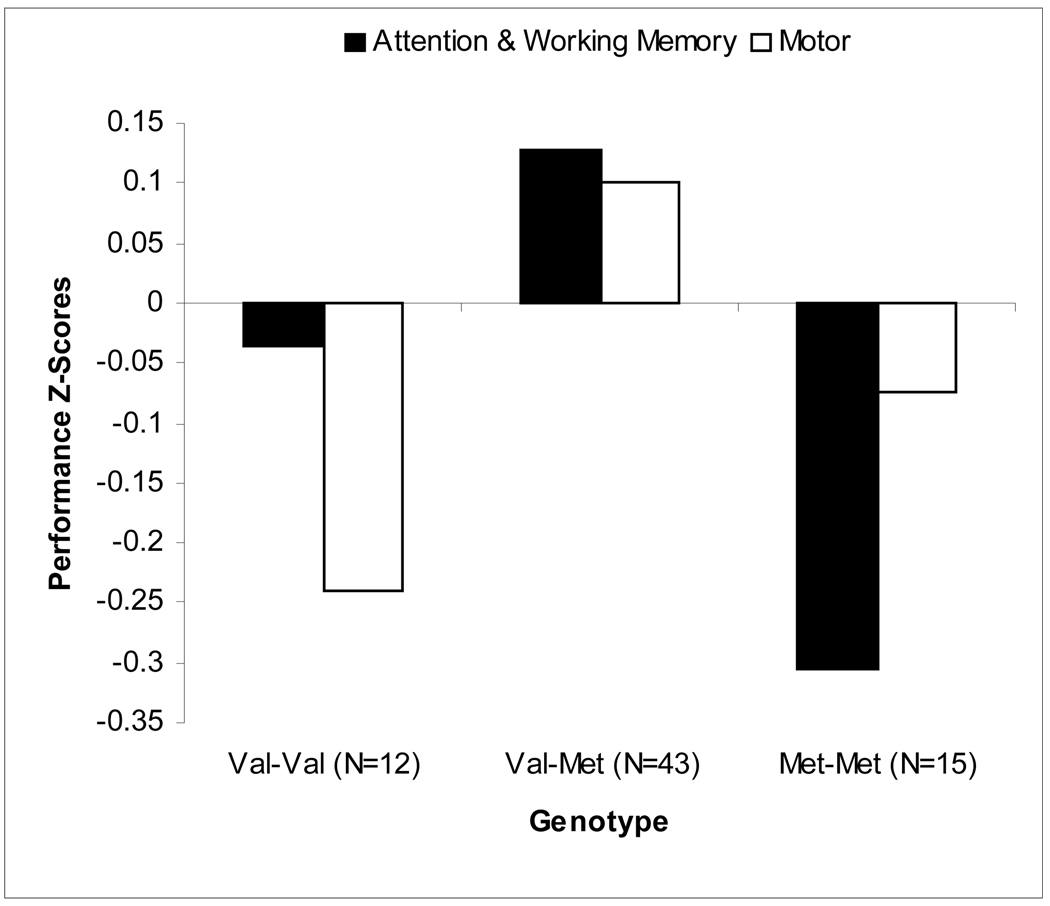Figure 3.
Illustration of the COMT genotype-by-behavior association in an adolescent sample: Adolescents, ages 9 to 17, who varied in COMT genotype completed a battery of neurocognitive tasks that reflect dopamine activity. COMT Val/Met heterzygotes performed better than homozygotes on measures of working memory, attention, and motor function in accord with the model illustrated in Figure 2, suggesting that they experience relatively optimal levels of dopamine activity during this period of the lifespan. (From Wahlstrom et al., 2007, with permission).

